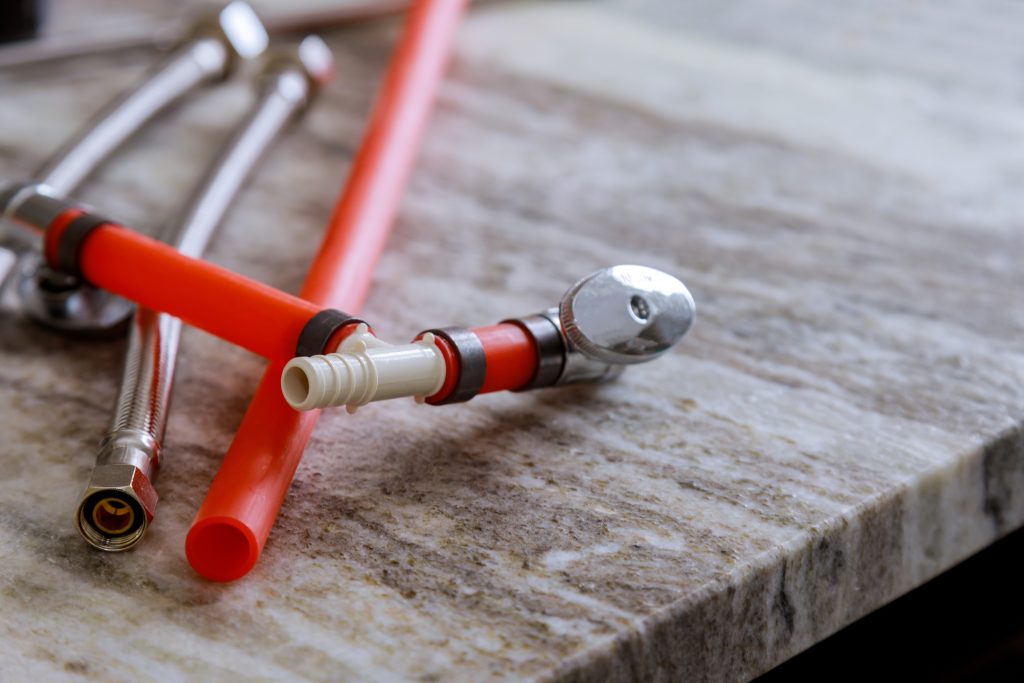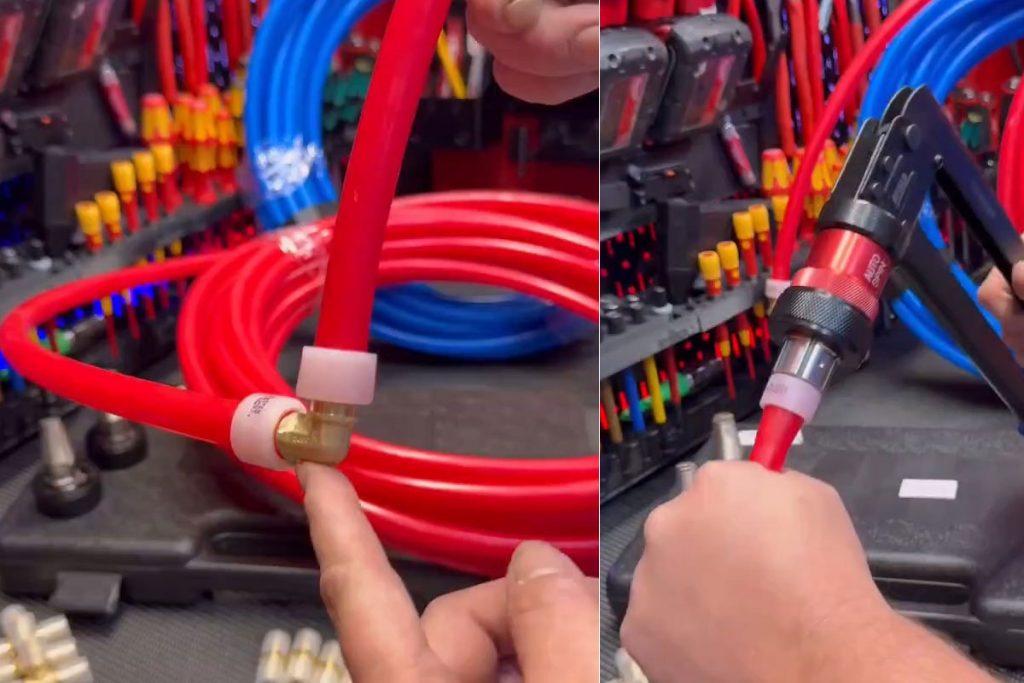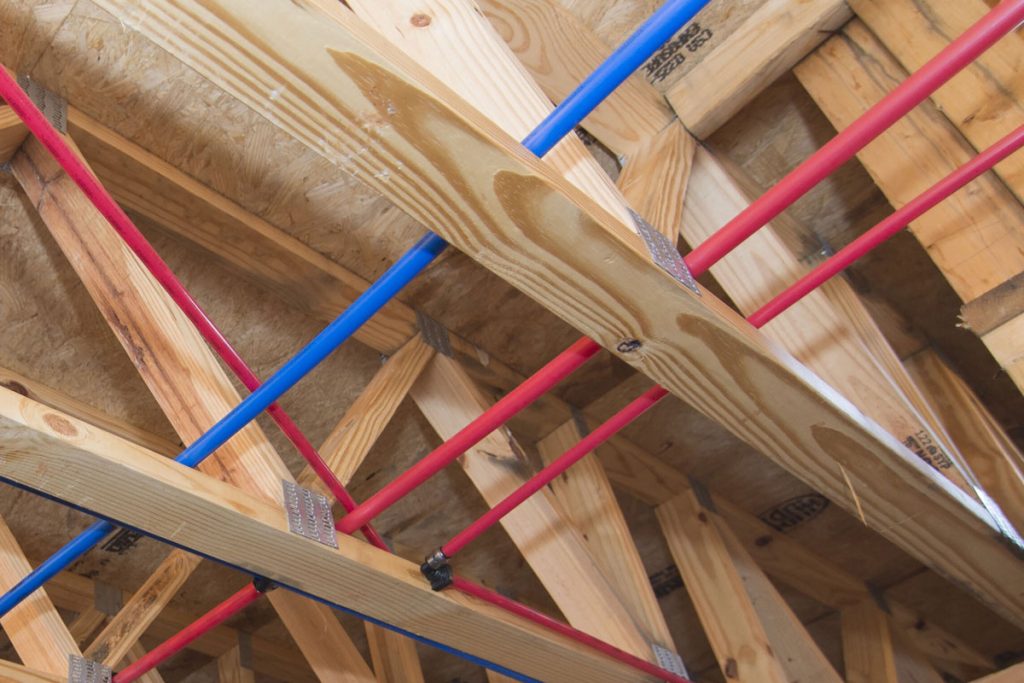PEX valves are designed for cross-linked polyethylene (PEX) tubing and piping systems. They can connect directly to PEX-A, PEX-B, and PEX-C pipes without using transition adapters, which is the main difference between PEX valves and regular valves. However, they are similar in many other aspects and serve the same purpose in most cases. For instance, PEX shut-off valves are designed for PEX piping, while other commonly seen shut-off valves can be used on PVC or copper pipes.
In this article, we’ll explore the different types of water valves compatible with PEX piping systems to help you understand more about water shut-off valves in-house. Moreover, we’ll cover the materials and tools required for installing shut-off valves on PEX tubes and provide a simple guide. Check out PlumbingSell to select from a wide range of PEX shut-off valves and PEX pipes.
Table of Contents
Why Should I Choose PEX Valves for My Application?
PEX water valves are popular for modern plumbing systems because of their ease of installation, durability and leak-resistant connections. Unlike other materials like metal, PEX valves can be installed quickly without soldering for connection. The push-to-connect fittings, crimp rings, or clamps make them ideal for both DIY lovers and professional plumbers.
PEX water shut-off valve in-house can be seen in a variety of applications. They are cost-efficient choices for PEX plumbing applications, offering lower material costs and less labor requirements. For instance, you may have noticed the shut-off valve under-sink in the kitchen for controlling the water; it could be a valve used to regulate or shut off the water. Various materials, types and sizes of PEX valves are available for you to choose from. With their compatibility across a wide range of both residential and commercial PEX plumbing systems, PEX valves could be among your top choices for providing a dependable, long-lasting solution for controlling water flow.
Different standards of PEX Shut-Off Valves
PEX shut-off valves are available in several standards, each designed for specific connection methods and applications. These standards are designed to ensure compatibility among different types of PEX plumbing systems and the durability of the fittings. The most widely used standards for PEX shut-off water valves are ASTM F1807 and ASTM F1960.
ASTM F1807
These connections are manufactured following the ASTM F1807 standard. It relies on mechanical compression to create a strong, leak-free seal around the shut-off valve and pipes. The F1807 shut-off valves are typically made of brass or poly-alloy, which makes them affordable, durable and flexible for both residential and commercial plumbing systems. However, they might not be as freeze-resistant and strong as other types of materials.
The installation of F1807 PEX water valves and fittings requires a PEX crimping tool or a clamping tool. Although soldering is not needed for connection, crimp rings or clamp rings are still crucial to secure the PEX pipe onto the shut-off valves.
ASTM F1960
The F1960 shut-off valves and fittings are produced according to the ASTM F1960 standard. They are a more advanced PEX connection standard that utilizes the PEX pipes’ flexibility to create a tight and leak-proof seal without the requirement of metal rings or clamps. They are more seen in PEX-A plumbing projects as PEX-A pipes tend to be the most flexible PEX material type. The F1960 PEX connections are commonly made of brass, PEX and polymer.
For installing F1960 PEX shut-off valves and connections, you will need a PEX expansion tool as the PEX pipes have to be extended before inserting the valves. They are capable of providing a more secure seal as the pipe will shrink around the fitting to create an even tighter connection. F1960 PEX water shut-off valves also have better freeze resistance due to their flexibility. They are an excellent choice for durable, high-performance plumbing systems, particularly in areas prone to freezing temperatures.
How to Install a Shut-Off Valve on a PEX Pipe
Installing a shut-off valve on the PEX piping system is a crucial component to maintaining a reliable and efficient plumbing application. A Shut-off valve is a valve used to regulate or shut off water easily and quickly. They can be used for both main water supply lines and specific fixtures, allowing quick repairs, replacements, or emergency shut-offs without disrupting the entire water supply. However, the installation steps for different types of shut-off valves are not the same. We’ll introduce the basic steps and the materials you might need to help you complete an efficient and leak-free PEX piping system.
Tools & Materials Needed
- PEX shut-off valve (push-to-connect, crimp/clamp, or expansion type)
- PEX tubing cutter
- Crimping tool (for ASTM F1807 crimp method)
- Cinch tool (for ASTM F1807 clamp method)
- PEX-A Expansion tool (for ASTM F1960 expansion method)
- Crimp rings, clamp rings, or expansion sleeves (depending on the method used)
- Deburring tool (optional for cleaner cuts)
- Measuring tape and marker
Step-by-Step Installation Guide
Step 1: Turn off the water supply. Before you start any plumbing installation or maintenance process, always remember to shut off the main water supply and drain any remaining water from the pipes. This will prevent leaks from the water shut-off valve in the house during installation and ensure a safe working place.
Step 2: Cut the PEX pipe. Use a PEX tubing cutter to make a clean, straight cut at the desired location for installing the shut-off valve. Remember to remove any burrs or rough edges on the pipe to ensure a smooth surface for a secure connection.
Step 3: Install the shut-off valve. We’ll introduce how to connect the F1807 and F1960 water shut-off valves to PEX pipes.
Method 1: Crimp or clamp (for ASTM F1807)
- Slide a crimp ring or clamp ring onto the PEX pipe
- Insert the PEX water shut-off valve into the PEX pipe until it reaches the fitting’s shoulder
- Use a crimping tool or clinch tool to tighten the crimp ring or clamp ring around the pipe
- Check for potential leaks with a crimp gauge
F1807 shut-off valves are the best options for permanent installations, budget-friendly projects and DIY lovers who have essential plumbing tools. They are easier to install and maintain compared with other types of water shut-off valves in the house.
Method 2: Expansion (ASTM F1960)
- Put an expansion sleeve over the PEX-A pipe
- Use a PEX expansion tool to expand one end of the pipe
- Quickly insert the PEX shut-off valve into the expanded pipe before it shrinks back
- Allow a little time for the pipe to cataract and shrink back to its original size, creating a tight and leak-free seal.
F1960 shut-off valves are mainly seen in PEX-A piping systems, as PEX-A is the most flexible type of pipe, which makes them more suitable. Therefore, they are recommended to be used for freeze-resistant installations and long-term durability projects, and we do encourage looking for professional plumbers’ assistance as it could be a bit too challenging to install.
Conclusion
Installing a shut-off valve on a PEX pipe is a fundamental part. By understanding the different types of PEX shut-off valves and different connection types, you should now be able to select the best option for your specific plumbing needs. Each method has its advantages, with F1807, crimp/clamp fittings methods, they are budget-friendly and install. On the other hand, F1960 expansion fittings methods offer superior leak resistance and durability between water shut-off valves and PEX-A pipes, even under colder climates.
Whether you are working on a DIY plumbing repair or a professional installation, following the proper steps and using the right tools will help ensure a secure, durable connection for water shut-off valves in-house. Check out PlumbingSell for a wide range of options of main water shut-off valve types to find the best for your plumbing projects.



